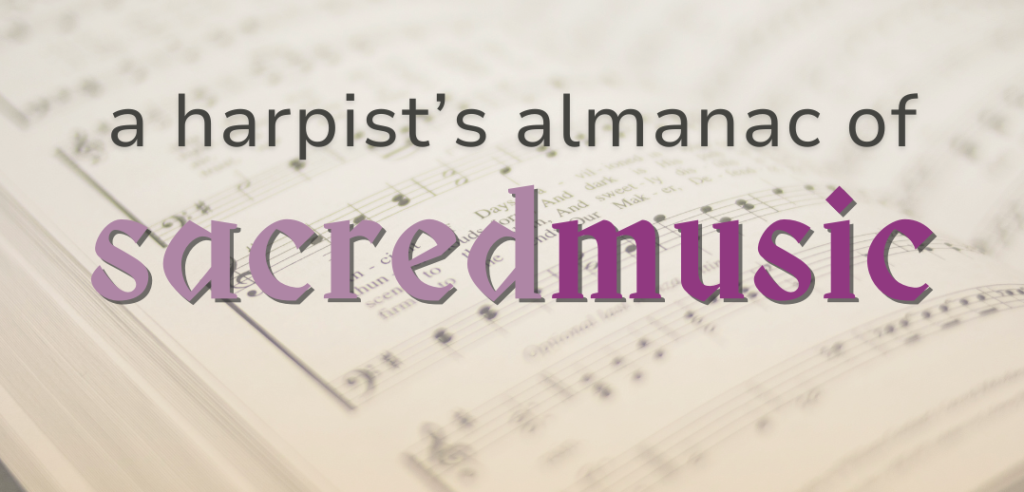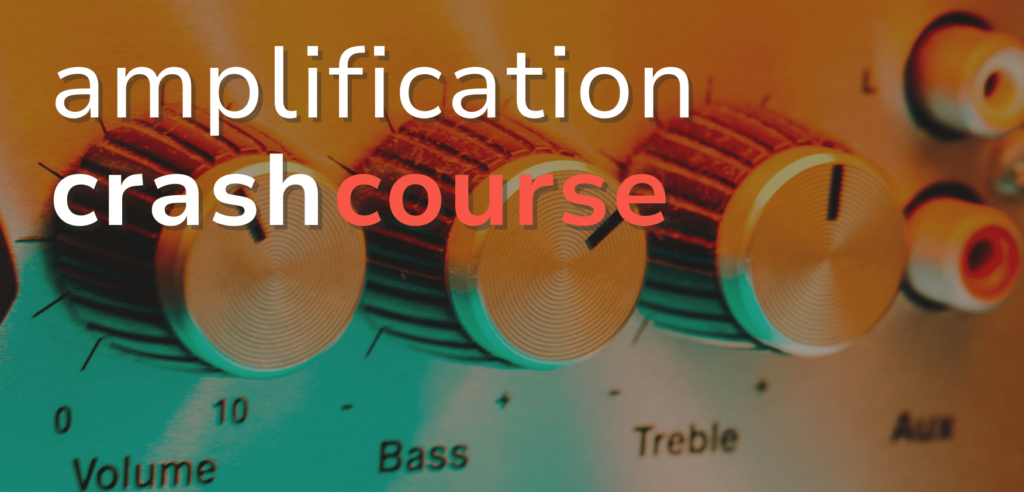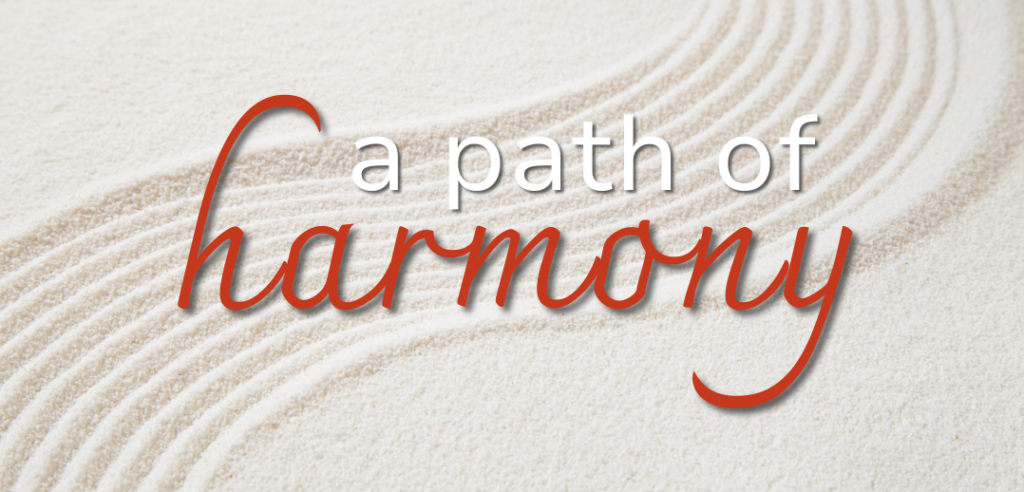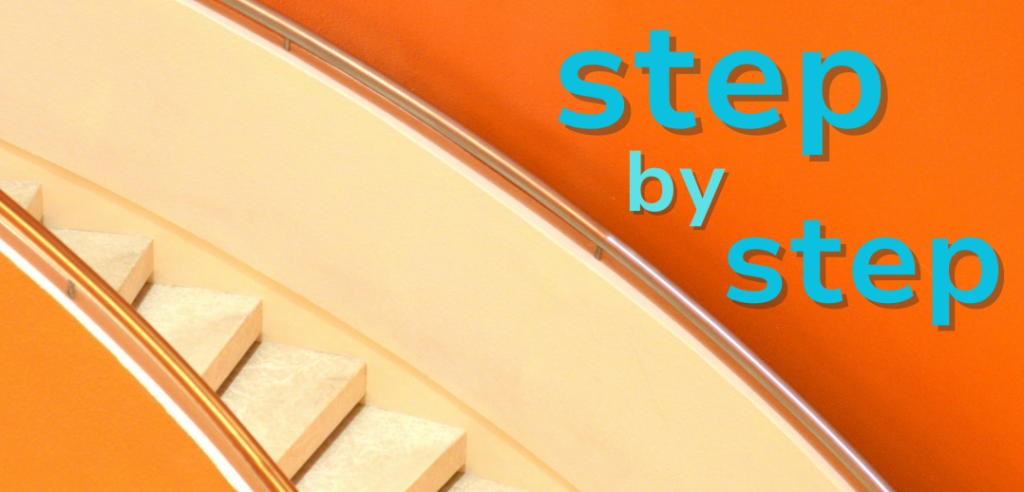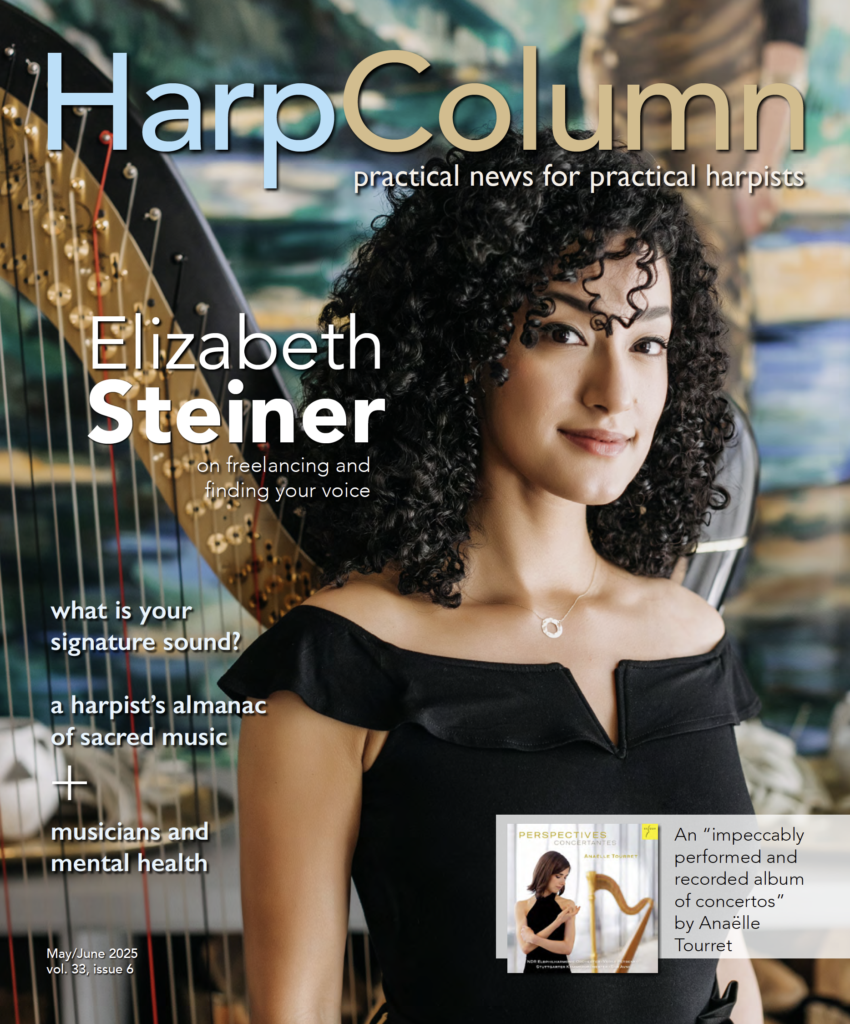I wish now I had paid more attention. I suppose it’s a sign of age and possibly maturity or even wisdom, but I know I could have learned so much more. My harp teacher, Marilyn Costello, had the most beautiful tone I have ever heard in person, and I wish I had worked harder to learn what she taught me about how she created that tone.
Marilyn Costello was the principal harp of the Philadelphia Orchestra for 46 years. Originally from Cleveland, Ohio, she studied with Carlos Salzedo at The Curtis Institute of Music in Philadelphia. She joined the Philadelphia Orchestra directly from Curtis, even missing her graduation ceremonies because she was on tour with the orchestra. As a member of an orchestra that was known for its warm and vibrant sound, she made her own significant contribution. Her personal “Philadelphia sound,” like that of the orchestra, was rich, resonant, powerful, and expressive.
“The tone that is uniquely your sound, though, is a constant in any piece you play and whatever mood you are trying to set. It is the fundamental sound that is partly your technique, partly your touch, and partly your mental image of what a harp should sound like.”
—Anne Sullivan
I studied with Miss Costello privately from the time I was 10 years old through my college years at Curtis. It was only in later years that I came to recognize the inestimable value of those years of learning from her, and how those lessons shaped my ideas and expectations. For instance, I thought all harpists sounded like she did.
Certainly, I knew I didn’t sound that way, but it took me a long time to realize how individual her sound was. It took me even longer to understand my own sound and to begin to use the techniques she taught me to intentionally form my sound. Naturally, I discovered even more once I began helping my own students learn about their sound.
I have found teaching about tone to be both challenging and rewarding. While tone is a foundational element of our harp playing, it often takes a back seat to the more obvious necessities of notes and fingering. The study of tone requires time, patience, and attentive listening, all of which are commodities in short supply, generally speaking. When a student and I take the time to explore tone, however, there is often a breakthrough moment, a recognition of the indivisibility between what we physically do when we play the harp and the music we want to express.
The term “tone” itself can be confusing as we use it to mean two different, albeit related, things. We often refer to tone in the context of a piece or a passage in a piece that requires a particular sound. This is part of a player’s interpretation of a piece, revealing the intent of the music through a variety of tonal colors and textures. These specific colors can be created by using different articulations, physically adjusting the way we play the strings. As we develop technically, we also develop the control to create these colors.
Our repertoire of sound colors is like the paints on an artist’s palette; the more choices we have, the more interesting and expressive our music can be. For example, we might use a warm, lush tone for a romantic melody, a crisp, bright tone for a lively dance, or a whispery, ethereal tone for a delicate passage.
The tone that is uniquely your sound, though, is a constant in any piece you play and whatever mood you are trying to set. It is the fundamental sound that is partly your technique, partly your touch, and partly your mental image of what a harp should sound like. It’s the core of your sound, the foundation. You can think of it as the center of a wheel, steady and consistent, no matter the piece or style you’re playing, with the tonal color choices you make for a particular piece being the spokes of that wheel radiating outward.
Your unique sound
A good tone comes from a healthy technique—if there is an issue with tone, then there are other underlying issues with technique.
—Noël Wan
You may not have thought of your sound as being unique to you, but be assured that it is. Think of two or three singers you like and consider how each sounds distinctive. You can recognize their voices when you hear them, and although you like each of them, they have different qualities to their sounds. Harpists are no different. Each has a personal sound.There are many dimensions to creating your unique tone, and I asked some of my colleagues for their insights.
Noël Wan, Assistant Professor of Harp and Entrepreneurship at Florida State University, explains the practical side of tone this way: “In my opinion, tone can refer to 1.) the basic sonic quality of a harpist’s approach to the strings, which varies based on technique and natural hand composition, and 2.) the range of timbres that a harpist can produce on the instrument. At the extreme end of the spectrum—the differentiating factor we can’t control—is variations in our hands. A muscular hand with thick finger pads and a supple skin type tends to naturally produce a full, round sound. However, one’s technique can also make a big difference in tone quality, from deep and rich to clean and light. Finally, a harpist’s musical sensibility can be a major point of differentiation: some harpists will develop a wide palette of tones, and that range itself can be unique to a given harpist.”
Above all, tension is the enemy of a beautiful tone. Remarkably, this is one aspect of our technique on which every teacher agrees.
—Jaymee Haefner
Jaymee Haefner, Associate Professor of Harp and Director of Graduate Studies at the University of North Texas College of Music, emphasizes the musical connection: “Tone is possibly the most important aspect of our playing, because it links what we hear inside our head with the sound that our fingers produce. Without a beautiful tone, even the fastest, most accurate playing will lack connection for listeners. Since we physically touch a different string to produce each pitch, the sound is individual to the player, the particular harp, and the type of strings used…but tone is also the aspect of our playing which conveys meaning. It’s the ‘intangible’ part of playing that drew all of us to this instrument!”
The idea that our sound begins in our head, in our “mind’s ear,” is a crucial one. In order to develop our sound, we must be listening for it, not only hearing what comes out of the harp, but first creating that sound in our head before we play. Even so, our sound is guided, perhaps limited, by our technique. This means that our sound, like our technique, is a work always in progress and always in need of our mindfulness.
Singing is fundamental. We don’t need words when we sing and breathe a phrase.
—Lynne Aspnes
Lynnes Aspnes, Professor Emeritus of harp at the University of Michigan, explains the combination of the musical and the physical this way: “[A harpist’s tone is a product of] what they hear in their imagination when they are playing and how they have developed the muscle control to nuance and shape their musical phrasing.
“There is much a musician can do to cultivate an understanding of the muscle control it takes to create a baseline good sound. This is true for any physical discipline: when we are using the proper muscles in a healthy way we can learn the breast stroke in a swimming pool, a flying camel on the ice rink, or the healthy flow of a yoga routine. Mastering a physical discipline takes time, experimentation, patience and a lot of trial and error. These experiences will be different for every harpist and so contribute in varying ways to how each of us approaches sound and color in our music.
“The foundation of creating sound comes from the physical approach to the instrument. A healthy approach equals the beginning of developing an equality of sound up and down the harp. Varying the expression of the fundamental sound comes from how each harpist brings their ear, voice, and musical knowledge of the repertoire to the music at hand.”
Technical aspects
I have spent much time trying to systematize the technical aspects of tone production, and have concluded that, allowing for the actual physical differences between players’ hands and physiques, there are really three main considerations.
First is the placement of the finger on the string—it should be secure but not stiff. The placement must prepare the finger to play.
Next, is the impetus to pull the string. I like to think of the energy to pull the string coming from the base of the finger, where it joins the hand. For me, this maintains the integrity of the arch of the finger and allows for the finger to play with strength but relatively little effort.
Third is the follow through, which is simply closing the finger to the palm. Closing the finger releases any tension in the hand and the sound of the string simultaneously.
As a student, I was amazed at my teacher’s ability to tell whether I was closing my fingers or not, even when she wasn’t looking at my hands. It finally dawned on me that she could hear the difference in the sound. As I began to listen more carefully myself, I found I could easily hear the difference too. Similarly, if my finger wasn’t well-placed on the string or if I hadn’t put the right energy behind it, I didn’t get the sound I wanted. That difference in the sound made me rethink my technique and the way I practiced it. I was no longer doing exercises and drills merely to play faster or more evenly. My sound was the goal.
Haefner has this to say about technique: “For every string we play, there are at least three parts of the motion: 1.) the approach, 2.) the preparation, and 3.) the release. By varying the amount of time, direction, and amount of pressure for each of these motions, the tone and articulation are defined. For example, an approach from above (i.e. “dropping in”) creates a very different sound from an approach which is horizontal. A long preparation produces a very different tone from a short preparation… articulation and tone are interwoven according to our motion. Experimentation and exploration are the key.”
Wan adds these technical considerations: “It is impossible to create a beautiful tone if the fingers do not fully engage the string and the fingers and hand do not relax. Many beginner harpists I’ve worked with will develop a bad habit of sliding over or pulling at a string instead of plucking it, which is more of a pushing-and-releasing gesture. Relaxation is also key. Tension in the fingers and hands tends to create tight, sharp tone. A fully relaxed finger will pluck the string in a way that maximizes the resonance of the string, which creates a clear, full tone.”
Tension and relaxation
Although there are many physical factors that help produce a beautiful sound, there is one sure way to ruin it: tension. While it takes strength to play the harp, tone requires relaxation. Strength and relaxation might seem like opposites, but they’re actually partners in creating a sound that’s both powerful and free.
Haefner on tension: “Above all, tension is the enemy of a beautiful tone. Remarkably, this is one aspect of our technique on which every teacher agrees. While the particular strategies to avoid tension differ, suppleness in technique is always the goal because it allows us to play with ease and grace.”
True strength in harp playing doesn’t come from brute force or tension; it comes from efficient motion and proper technique. When we talk about strong playing, we’re really talking about the ability to produce a rich, resonant sound with control and ease. This strength comes from closing your fingers fully and naturally into your palm, using the full range of motion in your fingers. It’s not about gripping the strings or muscling through, it’s about letting your fingers do their job without interference from unnecessary tension.
Relaxation is what allows that strength to shine. If your hands, arms, or mind are tense, your movements become restricted, and your tone sounds tight or forced. Relaxation is about releasing that tension so your fingers can move freely and fluidly. It’s about trusting your technique and letting go of the need to control every little detail. This is the magic of suppleness—when your hands are relaxed, they can respond naturally to the music, creating a tone that’s both strong and expressive But there are other considerations as well.
Is it me or is it the harp?
Aspnes on the instrument: “Tension, both mental and physical, is the enemy of all we do at the harp, and in life. The instrument is part of the equation, for sure. We will often hear people say, ‘Oh, that harp sounds beautiful,’ without understanding or acknowledging that it is the musician who is working with the instrument to make it sound its best. Every harp has its own resonating characteristics. If we force what the instrument has to give, the sound will be harsh and grating. If we work with the instrument, we are more likely to create pleasing sounds that then lodge in our subconscious and are available to us each time we sit down to play.
“The physical equation is to understand and use the right muscle groups for the right job. Combined with hearing and responding to the harp under your fingers, you’ll be well on your way to developing and delivering a consistently beautiful sound.”
When I sit down at a harp I’ve never played before, the first few chords I play give me an idea of what that harp sounds like and what I can ask of it. Does it feel or sound tight? Is the string tension lighter than what I’m used to? Is the sound vibrant or more self-contained?
After a few minutes of playing, though, the harp and I get used to each other. I am able to discover more about how to get the sound I want from the harp, at least as much as that harp can give me. We warm up to each other.
I always enjoy that process—finding the sound I want in an instrument. It’s a magical process to listen to as well, hearing a harp produce a new voice with a new player. That process only works, though, when you have the sound you want in your ear and you have practiced the technical aspects of creating that sound.
It’s never too soon to start
Don’t feel that you have to wait until you’ve reached a certain stage of harp playing to begin working on your tone. It’s something you can, and should, be practicing from day one.
Wan on when to start: “I talk to my students about tone from the beginning of their studies. A good tone comes from a healthy technique—if there is an issue with tone, then there are other underlying issues with technique (this perspective comes from my own journey working on my tone). I try to work on two facets of tone. The first is developing a clear and firm overall tone as a technical fundamental, which my students do by working on simple exercises or short passages in their pieces. Practicing slowly and loudly is key, but it’s possible to do that and still have a muddy tone, so I also want them to be physically aware of whether they are engaging their fingers correctly in each plucking gesture. The second facet is the range of tones, which involves demonstrating how different parts of a finger can produce different timbres. Building range requires both solid technical control and musical maturity, so I usually start teaching that to more advanced students.”
Aspnes on teaching tone: “[I teach about tone] from the beginning, but I don’t use words. I focus on how it feels to work with the string and with each harp. Singing is fundamental. We don’t need words when we sing and breathe a phrase.”
Haefner on developing tone: “In order to develop tone, I encourage my students to listen to a wide variety of harpists and to define what they like (or don’t like) about a particular player’s tone. This is one aspect of our playing that must be developed first in our internal ear and then replicated in physical practice, rather than the other way around. Our ear must always be ahead of our playing. Discussions of tone should begin from the first day of playing, but can be introduced in a simple way, asking students to copy their teacher’s tone.”
Listen
Clearly, tone is more than technique. It’s important to develop your understanding of tone through listening. One fun exercise I have done myself and used with my students is to “try on” different harp sounds. We listen to two or three different harpists and discuss the attributes of their sounds, particularly focusing on the qualities that distinguish them. Then I ask them to sit at the harp and see if they can replicate the sounds they heard. This exercise strengthens the connection between hearing and doing and develops the ability to play the sound you hear in your head.
This is also a way to develop a vocabulary of words that describe different sounds. From time to time, I like to stretch a student’s imagination by asking them to play a passage as if it were purple or some other color. Creative thinking is required to decide what purple would sound like, or how it might sound different from another color. Generally, what students discover is that they have a larger repertoire of tone colors in their head, and consequently their fingers, than they imagined.
Haefner on tone color: “We use many different words to describe tone, related to senses… especially because tone and articulation are closely related. Rather than using the overused musical descriptions such as ‘bright,’ ‘warm,’ or ‘dry,’ we often use words for taste or smell such as ‘acrid,’ ‘floral,’ or ‘minty.’ Even when a word sounds silly, it could help capture the character needed for a particular passage—the more memorable (and humorous), the better!”
Here again we can distinguish between the tone color that is specific to a piece or a passage and the tone which underlies that color. Even the softest notes you play should have the core of sound that comes from correct technique. That core is what allows a performer’s softest tones to carry to the back of a concert hall. Similar to a stage whisper that sounds whispery but has enough vocal power to project to the audience, our softest sounds need the power of our tone behind them.
Wan on tone color: “I use the words ‘color’ and ‘body’ a lot. Color refers to the timbral quality: ‘What color are you trying to achieve in this passage?’ Creating certain colors is connected to controlling resonance (e.g. pdlt effect has less resonance) and/or varying articulation (e.g. pushing the strings more deeply for pesante). I think of body in the same way the word is used in describing wine. It’s a kind of thickness, a feeling of substance or weight in the sound. A tone without body will be thin and papery; the sound doesn’t linger after it’s plucked. It’s very ephemeral, but that quality has nothing to do with amplitude. So, I will tell my students that their pianissimos must still have body.”
Finding your sound
I used to despair that my sound wasn’t more like my teacher’s. Hers was pure liquid gold, a quality that is audible on the Philadelphia Orchestra recordings even when the harp is buried in the massive orchestral texture. My sound was never destined to be like that, primarily because my hands are so different. Mine are thin, and my fingers callus easily. Hers were fleshy with strong but soft fingertips. Nature didn’t intend us to have the same sound, but that didn’t mean my sound was bad. I learned to file my calluses lightly to keep my fingertips supple, and I listen.
Recording yourself is often a good way to begin listening to your sound. The sound we hear when we are seated at the harp is somewhat different from the sound that reaches a listener. A helpful exercise is to record yourself playing your harp in three different rooms or at three different distances from the harp. The farther the microphone is from the harp, the less you will be distracted by finger noise and the more obvious the main characteristics of your sound will be.
If you think that your instrument is limiting your sound, ask your teacher to play your harp for a bit. Listen to the way your teacher works with your harp to get the sound she wants from it. Your harp may not be capable of the sound you want, but it may have more of the sound you want than you think. That’s the time to really start working on your tone.
What you can do
There is no single “tone exercise.” Developing your tone isn’t a matter of drill; it’s a case of paying attention.
Wan on sound development: “Besides working on the same things I tell my students, I try to listen as mindfully as possible when I am working on tone. I don’t have hands that naturally produce a full-bodied sound, so I am constantly watching and feeling that my fingers are plucking the strings properly. This mindfulness is even more crucial after I’ve taken a vacation from the harp, or if I’m cramming a lot of practicing in a short amount of time.”
On the other hand, every note we play is an opportunity to check our tone. When we play a string, our attention is most often drawn to the immediate concerns: the right note, the right rhythm, the right pedal or lever. Those considerations are more than enough to keep us occupied.
What we often forget, though, is that every note has a meaning and a purpose. Every note was written by the composer with intention, and we should play it with the same degree of intention. So while there is no magic bullet drill for our tone, every note should not only be correct but should be beautifully played with a sound that is appropriate for the music we are expressing.
This can be achieved easily by simply devoting our focus to our tone for one or more of our repetitions of a passage. Tone should be a focus in our daily warm up when we are working at our slowest pace and paying most attention to our physical attitude at the harp. Mostly, though, we need to remember to take time to listen.
Aspnes on sound development: “Sound/tone is based in what we feel and what we hear. Hopefully the student and I are always working with the physical development and control and with our ears wide open. Creating a durable and sustainable technique is the starting point, so that we learn how to use the muscles to best serve the music, and us—for years to come! When the student has a grasp of the physical process and feeling, then we can work with nuancing those feelings into creating a variety of great tone colors.
“In my work with students I emphasize that every note we play has meaning, phrasing, direction, beauty, whatever you want to call it. I encourage students—okay, I am a bit more emphatic than that, to be sure—to never ‘phone it in.’ Be it a warmup, an etude, a solo work, a chamber work, or a concerto, it’s crucial to be ever vigilant about using that durable, resilient, and supple technique to sing through every note. When we are musical in our warming up we’ll be musical in shaping the phrasing and sound of our works headed to the stage.”
Awareness of the meaning of every note seems like a monumental task to incorporate into daily practice. Once it becomes daily practice, however, it becomes nearly impossible to play without expression and without using a full, relaxed, and resonant tone.
One of the key elements for success with this lies in switching your mindset from a “correction” mindset to a “creation” mindset. When we are invested only in fixing what we have done incorrectly, we are listening after the fact; we have waited for something to go amiss. It is more useful and more productive in every sense of the word to think about the way we want the note to sound before we play it, rather than after. This is more difficult in the short run but far more effective in the long run. It is also infinitely more interesting. It’s about making music rather than adding up mistakes.
One thing I have always found helpful for myself and for my students is to emphasize the musical phrasing. The phrase is the melody or the “song” of the music. It tells us what the music is about and gives us musical clues to the pacing, color, and tone we want to use. When we focus on the phrasing, we are thinking creatively, proactively rather than reactively, and our choices, rather than our corrections, direct our playing. That’s what our tone is for—to play the music, not just the notes.
If you follow this direction from Lynne Aspnes, you will hit the mark every time: “Sing. And then sing some more. Be 100 percent mindful of how you are using your muscles and in using the proper muscles. Hear the sound you are making. Never settle! Take time, be patient, and connect with your inner musical voice.” •








